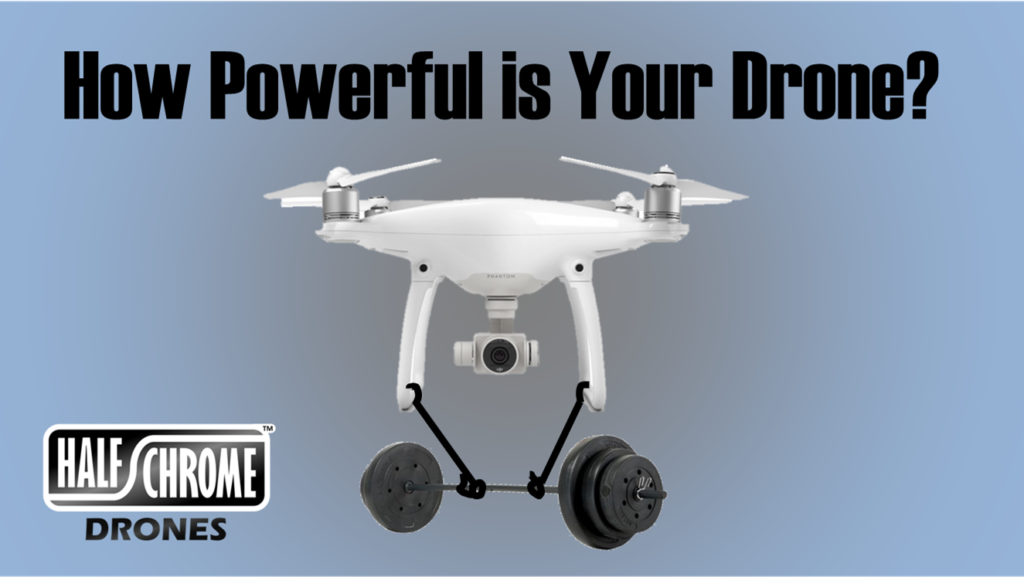At Half Chrome, we strive to provide real quantitative metrics to back up our opinions about the drones that we test. We do careful comparisons of camera quality on our camera page. We even crash our drones to see how they hold up. Admittedly, we don’t always try to crash.
Our latest quantitative metric is drone thrust. We built a custom test rig and so far we have put more than 20 drones through this test. You might just be surprised at the results. Before we get to those results, we will quickly describe what drone thrust is and why you should care how much thrust your drone can produce.
What is Drone Thrust?
Simply put, drone thrust is the amount of upward force your drone can produce when at full throttle. You are probably not the only one with a juvenile snicker when reading “thrust” so many times, so lets’ just get it out of the way…
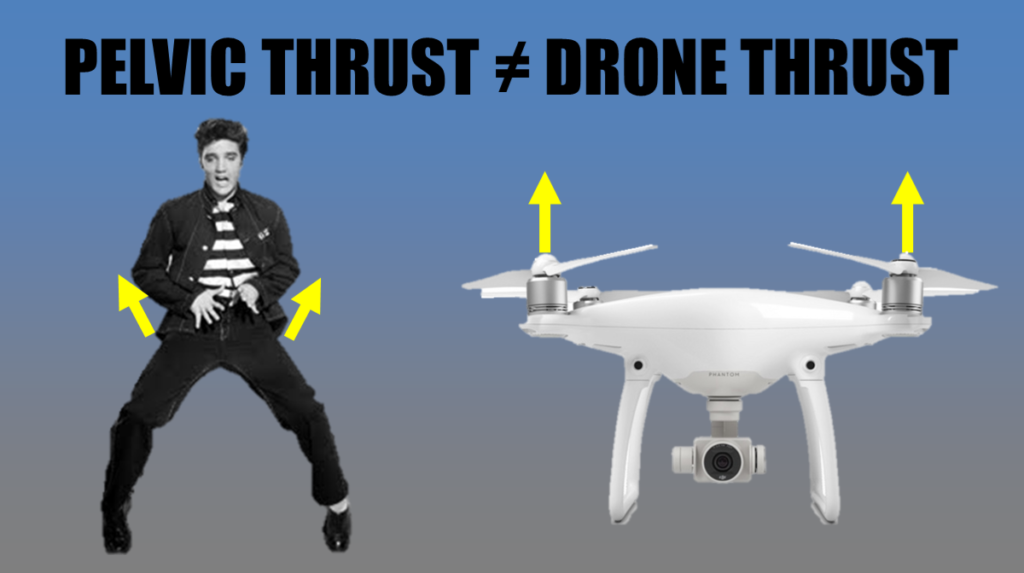
Why does Thrust Matter?
The amount of thrust a drone generates tells you how much the drone can lift. If a drone’s thrust is less than the weight of the drone then you don’t have a flying machine, you have a paperweight.
Most drones don’t carry what we would think of as a “payload”, the drone’s weight is the drone’s weight. After all, we are not using our DJI Spark to deliver packages for Amazon. Since most drones just need to lift themselves, a very telling metric is the thrust-to-weight ratio. This ratio is simply the drone’s thrust divided by the drone’s weight. We came up with our own scale based on our experience testing dozens of drones in a variety of conditions.
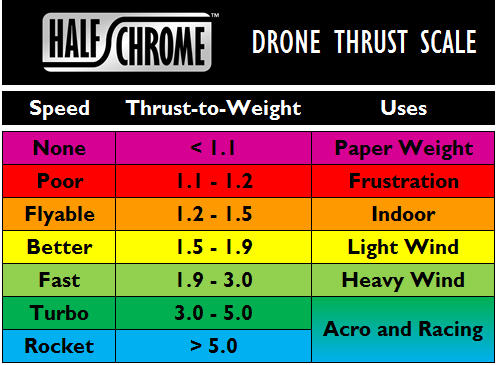
In our experience, good performing drones have a ratio over 1.5. Racing drones typically dial in at over 3.0, but you can race anything that can fly, and some mini racers may be less powerful.
How do we Measure Drone Thrust?
We designed our very own precision apparatus to measure drone thrust. It’s pretty simple really. Think of a seesaw. The drone pushes up on one side, and a scale on the other side measures a reaction force.
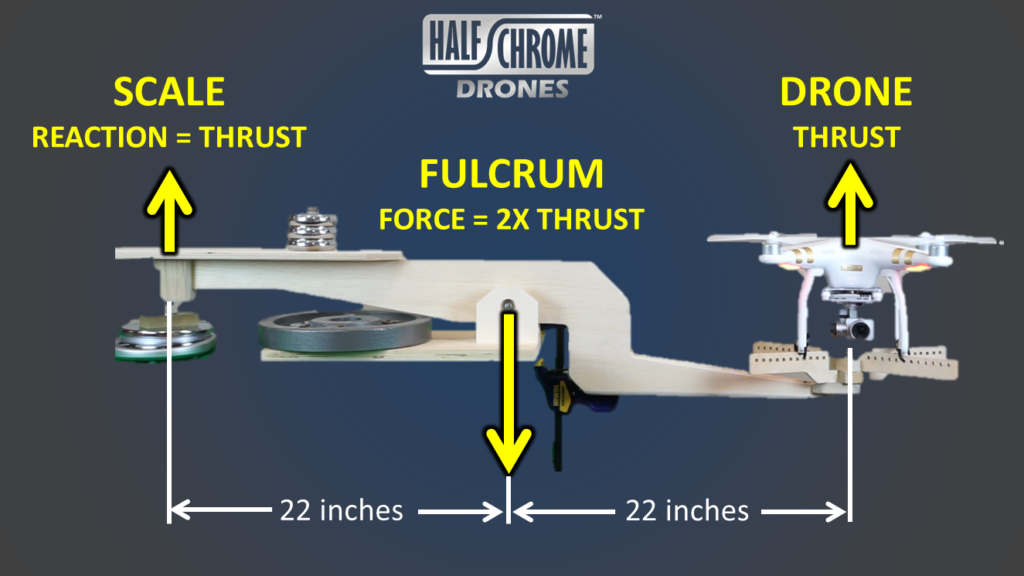
Test Rig Design Details
Plywood and Rollerblade bearings are the key ingredients, but there are some other important design details we included.
The Fulcrum: The bearings we picked have practically no friction so we can get accurate measurements.
Hold Down Force: The setup needs to be clamped to a table so that the drone can’t fly away with the seesaw.
Keep the Drone Low: The drone is lowered to reduce the extra lift the drone may get from ground effects off of the table that the rig sits on. The drone is also positioned beyond the edge of the table to eliminate reflected upward draft that would affect the measurement.
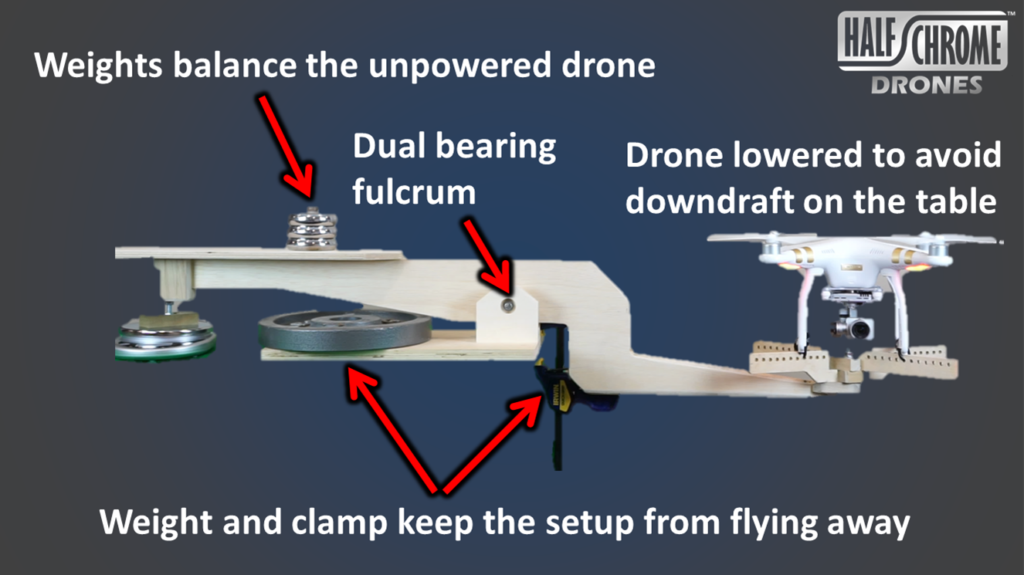 Counter Weight: There needs to be some weight added to the seesaw so the end doesn’t lift off of the scale before the drone is powered on. With a small force on the scale, the scale can be zeroed before the thrust test starts.
Counter Weight: There needs to be some weight added to the seesaw so the end doesn’t lift off of the scale before the drone is powered on. With a small force on the scale, the scale can be zeroed before the thrust test starts.
Adjustable Supports: Not all drones are shaped like an ‘X’. The support can be adjusted to the shapes of different drones.
Thin Supports: If the drone is sitting on wide supports then the downdraft will reduce the total upward force measured by the scale. The design was optimized to reduce aerodynamic drag on the supports as much as possible.
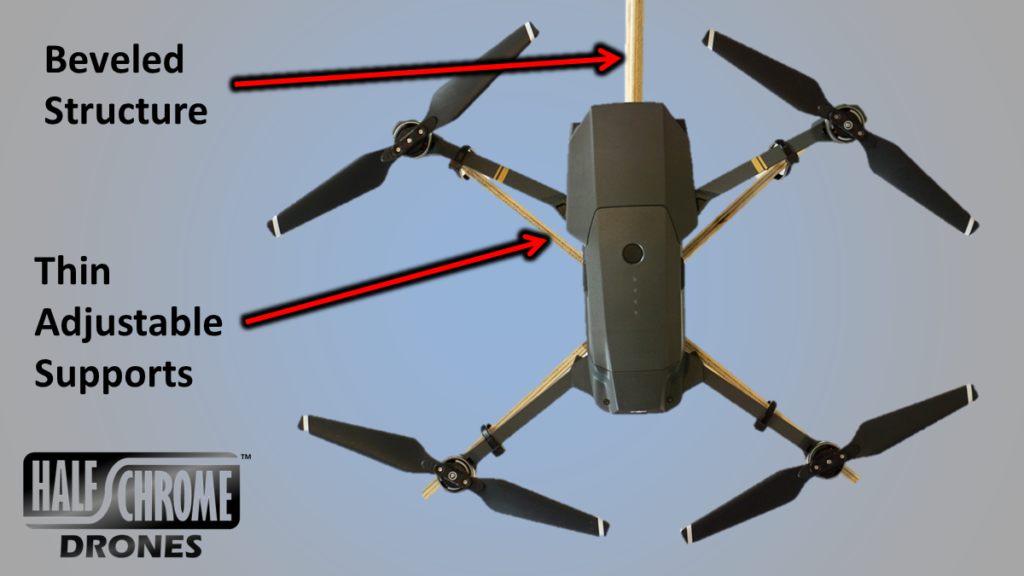
The Results: Which Drones Pass the Test?
Let’s start with everyone’s favorite topic, DJI Drones. The Spark is less than half the weight of the Mavic and has the lowest ratio of the DJI drones that we tested, with a thrust-to-weight ratio of 1.9. The Spark won’t be breaking any speed records, but you can still bring it home in sport mode in a pretty stiff breeze. Despite the extra pounds, the Mavic has a ratio of 2.5, making it a fast, maneuverable and sporty photography drone. The Phantom has the same ratio as the Mavic and is again almost twice as heavy.
| Check the price on the Mavic |
| Check the price on the Spark |
| Check the price on the Phantom 3 |
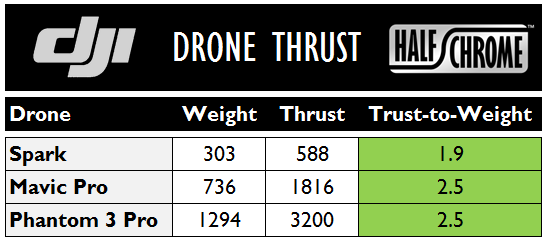
Moving on to small drones. The Eachine E011 is our favorite inexpensive mini-drone. With a ratio that is better than a DJI spark, you can have plenty of fun with this little toy. Moving up to the micro-brushless category the King Kong 90GT is our current favorite in this category. The 90GT’s ratio of 3.0 puts it nicely into racing drone territory despite its minuscule 90 mm diagonal size.
| Check the current price of the 90GT | Check the current price of the E011 |
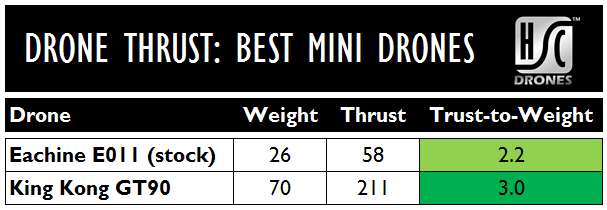
A couple of other drones that are noteworthy are the F100 and Bugs 3. These drones both sport a ratio that is better than the DJI flagship Mavic and Phantom models. The ratio does not include the extra weight of a camera that most people add to these brushless quads, but there is no doubt that these guys pack a lot of punch. Both are excellent low-cost starter drones if you are looking for something with no frills that can carry an action camera.
| Check the current price of the F100 | Check the current price of the Bugs 3 |
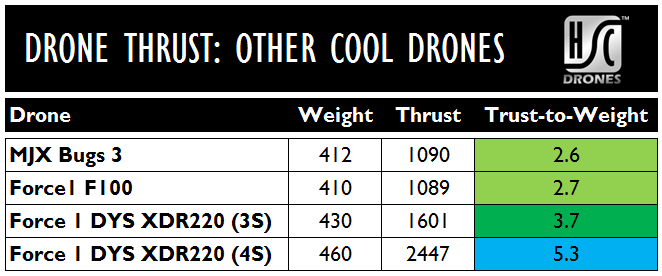
Finally, the only true racing drone that we have tested so far is the DYS XDR200. This quad came as an RTF kit provided by Force 1. We were happy to see that with a 4S battery this drone can easily kick into “ludicrous speed” with a thrust-to-weight ratio over 5.
| Check the Current Price of the DYS XDR220 Package |
Below is a summary of all of the drones that we have tested so far. Stay tuned for updates!
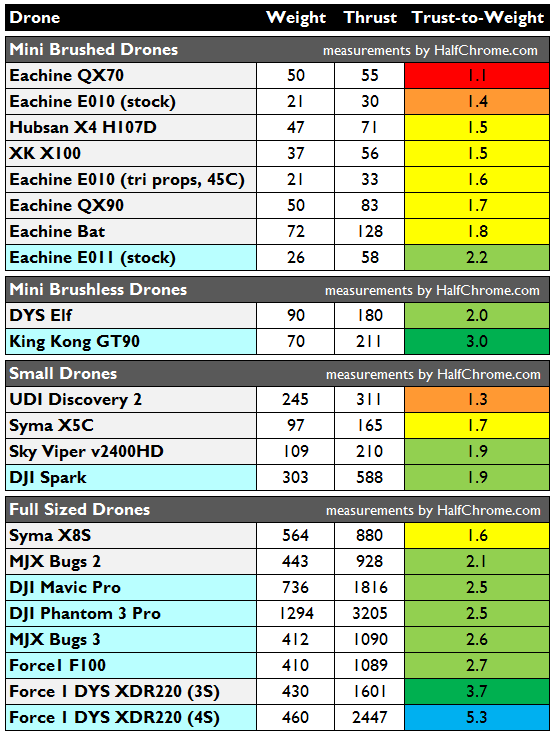
Subscribe to our email list to stay up-to-date with the latest articles like this from Half Chrome.
Disclosure:
This website contains affiliate links, which means we receive a commission if you make a purchase using these links. For full details visit the disclosures and disclaimers page.

